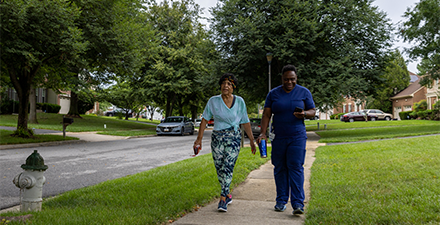Describing the issue as a problem that was troubling long before the COVID-19 pandemic made things dramatically worse, U.S. Surgeon General Vivek Murthy, MD, MBA, is calling on the nation to take immediate action to address health care provider burnout, writing that failure to act "will place our nation's health at increasing risk."
The plea for change comes by way of a Surgeon General's Advisory, a communications option reserved for "urgent public health issues." The recommendations included in the advisory are wide-ranging, touching on almost every corner of the health care and regulatory system, and include everything from better provider access to mental health care to stronger efforts to relieve administrative burdens, to the public's responsibility to adhere to public health guidelines.
The advisory also includes a list of steps health care workers can take that echo the self-care messages of APTA's Fit for Practice campaign available to the entire profession. APTA plans to build a continuing education course around the campaign resources later this year.
'A Whole-of-Society Approach'
Murthy's advisory describes a health care system "already at a breaking point" prior to the COVID-19 pandemic, weakened by "decades of underinvestment in public health, widening health disparities, lack of sufficient social investment … and a fragmented health care system" plagued by "burdensome administrative tasks." The pandemic simply "magnified and amplified" those pressures, he writes.
Addressing the crisis will require every facet of the health care system, including consumers themselves, to contribute to a common set of goals, according to the advisory. These include better health and safety protections for health care workers, the elimination of "punitive policies" for seeking mental health and substance use care, reductions in administrative burdens, greater investments in public health, an emphasis on the importance of community, and support for organizational cultures that "prioritize health worker well-being and show all health workers that they are valued."
Stakeholder To-Do Lists
With areas of needed improvement identified, the advisory next lays out a list of actions that should be taken by various players in the health care system: health care organizations, federal/state/local/tribal governments, payers, health IT companies, academia, communities, and health workers themselves.
Some examples of the recommendations:
Health care organizations. The advisory calls for greater efforts to empower health workers and show how much they're valued, increased access to mental health and substance abuse care, stronger efforts to combat workplace bias, and more investment to strengthen health prevention and address social inequities.
Federal, state, local, and tribal governments. At the governmental level, goals include adopting policies that better protect health care workers, implementing reimbursement models that support person-centered care, reducing administrative burdens, eliminating barriers to mental health services, diversifying the workforce, and making preparations for future health emergencies.
Health insurers and payers. Steps to be taken by payers to battle burnout include reducing administrative burden such as unnecessary prior authorization requirements, better supporting the quantity and quality of time providers spend with patients, making improvements to clinical care and preventive services, and adopting better evidence-based metrics to increase transparency.
Health care technology companies. The advisory states that "while comprehensive recommendations that span the spectrum and diversity of health-related technology companies are beyond the scope" of the resource, there are some "guiding principles and key steps" health care IT companies can take, including making electronic health records more efficient, improving virtual care services to better meet the needs of providers and patients, making interoperability a priority from the outset, and improving storage of and access to data.
Academic institutions, clinical training programs, and accreditation bodies. Recommendations for this stakeholder category include prioritization of learner well-being, acknowledging disconnects between official curriculum and the observed behaviors of faculty members and others (the so-called "hidden curriculum"), reducing barriers to mental health and substance use care, revising accreditation standards to recognize the importance of health worker well-being, and increasing inclusion and diversity in education programs.
Family members, friends, and communities. Steps to be taken by individuals include understanding when a health worker needs support, protecting individual and family health, following public health guidelines, and helping others to support health workers.
Health workers. The advisory recommends that health workers learn to recognize the signs of burnout, stay connected and reach out for help, prioritize moments of joy and connection, practice good health habits, and advocate for change at multiple levels — workplace, communities, and education.
